Articles and Features
For Those Missing The Beat: Memorable Photographs At Iconic Music Festivals
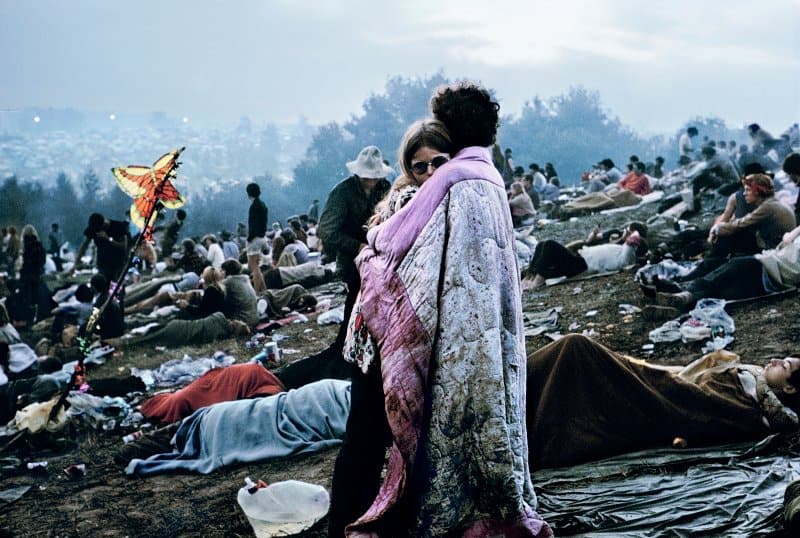
By Adam Hencz
As many music festivals are still forced to close their gates and bow to the coronavirus pandemic, pulsating crowds and booming open-air sound systems are not yet back to many countries. In the meantime, as signs point toward the return of live music in 2022, we retrace the iconic moments of the world’s most famous music festivals through the memorable photographs that captured their peaceful crowds, openness, and drive to cultivate originality and independence.
The mother of music festivals
More than 50 years ago, perhaps the most famous music festival of all time was known simply as “An Aquarian Exposition: 3 Days of Peace & Music.” Now, the Woodstock Music Festival is remembered as a symbol of hippie counterculture, which was founded on the basic beliefs of peace and love. In the face of the Vietnam War and the Civil Rights Movement, the 1969 Woodstock festival was organised to celebrate this movement. The Woodstock festival was so named because of the original plan to mount some sort of event in Woodstock, New York. The festival was initially organised by four young entrepreneurs who had no previous experience with large festivals. They had already begun selling tickets to the festival when they were denied permission to hold it where they had planned.
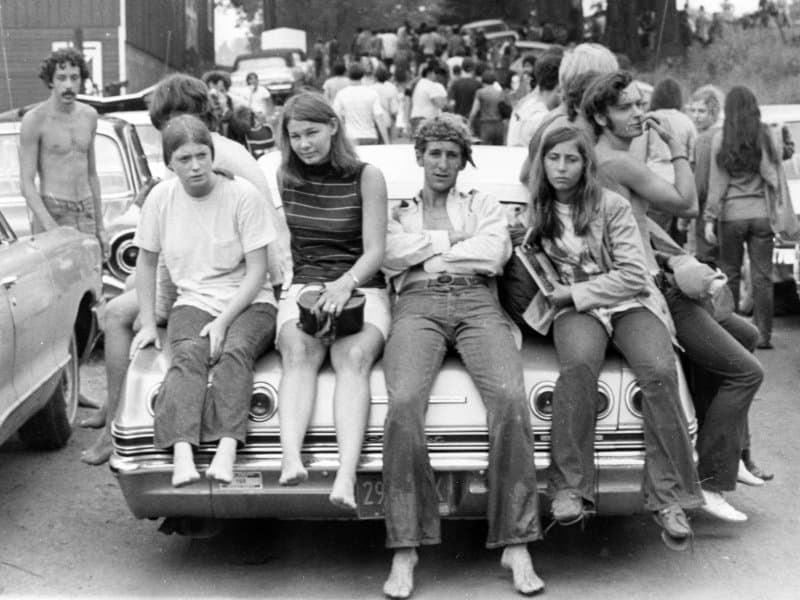
Eventually, the location was generously supplied by dairy farmers Max and Miriam Yasgur on their land in Bethel, New York, and Woodstock was scheduled to begin on August 15, 1969. Days before the festival began, hundreds of thousands of music fans started their journeys to the small town: the roads leading to the farm became so backed up with traffic that festival-goers began to abandon their cars and walk the rest of the way. More than 400,000 people flowed into the festival — 10 times more than what was planned, leading organizers to abandon their ticket stands and making Woodstock a free festival.
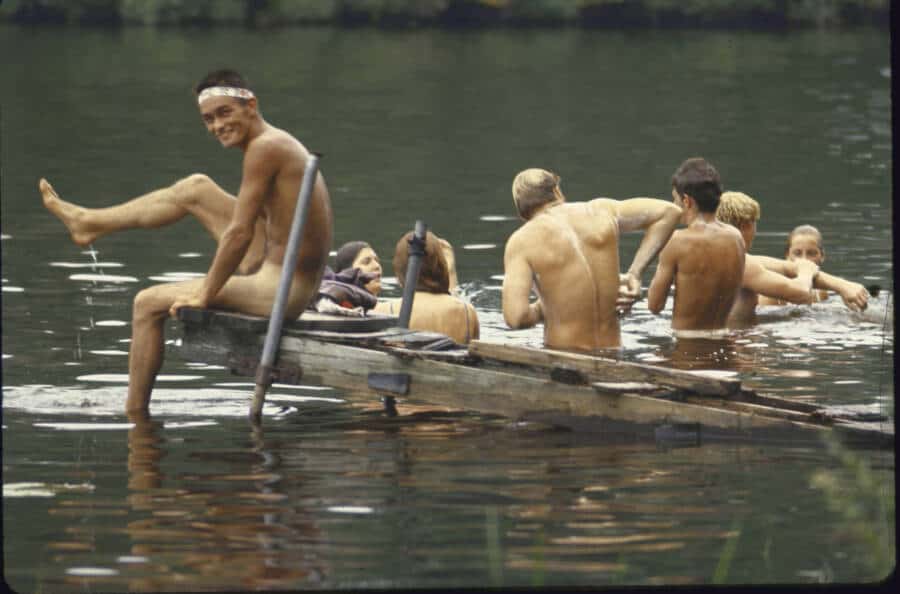
Many of the iconic images of the carefree festival-goers are shot by photographers that were not on assignment in Woodstock but had simply joined the celebration of peace spontaneously. In the heat of the uplifting flow of the festival, countless emblematic moments in the crowd were immortalised. Journalists also worked tirelessly among the chaos of the festival in order to finish their stories about the most famous concerts: Joe Cocker, Creedence Clearwater Revival, Janis Joplin, Ravi Shankar, The Band, Jefferson Airplane and Crosby, Stills, Nash & Young. One of the most iconic Woodstock photos depicts a couple wrapped in a blanket, embracing each other at dawn, heedless of the picture-taker and the chaos surrounding them. Photographer Burk Uzzle recalls taking the picture in the early Sunday morning, “I walk up and I know the curvature of the hill has to work with the curvature of the heads. And there’s the flag, it’s going to have to be there, and just enough of the people.”
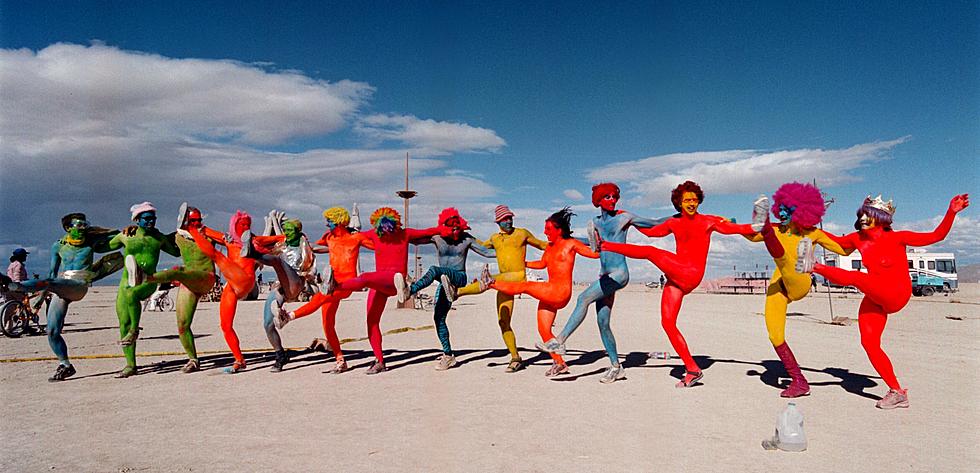
Burning Man
Burning Mant has been celebrated since its beginnings in 1986. The music festival is named after its very own “Burning Man,” a 52-foot-tall wooden man that is burned at the end of the festival. Despite high winds, dust storms, and heatwaves, tens of thousands camp out on a remote desert playa, or dry lake, in the Black Rock Desert near Gerlach, Nevada, for the week-long counter-cultural celebration of art and “radical self-expression.” Until 2019, travellers gathered to create art, light things on fire, and build communities with a shocking level of transcendent beauty. Even though today the festival has earned a reputation for drawing a crowd of young, party-loving Silicon Valley residents, every iteration of the festival electrifies the vast desert canvas and turns the shunned dry lake into a spectacular celebration.
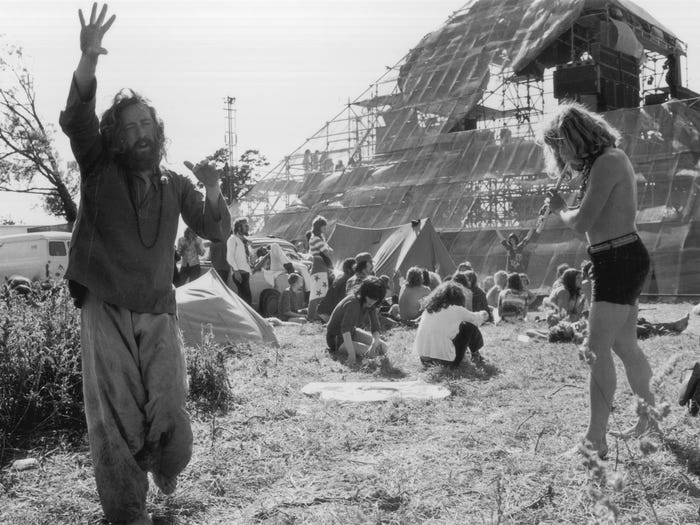
(Photo by Ian Tyas/Keystone Features/Getty Images)
Music festivals in Britain
Across the pond, the UK’s biggest festival is Glastonbury Festival, which started in 1970. Attended by a few hundred hippies, the first edition of the musical event was a greatly different happening to the one we know today. There were no fences to keep out gatecrashers, but in fact, when a group of hippies walked all the way to the festival from London thinking it was a free festival, the crowd all chipped in for their entry fees. Advertising for the event was minimal, and info was spread by word-of-mouth. The festival’s main stage, the triangular Pyramid Stage became an iconic symbol of British music culture and has hosted headliners such as David Bowie, Echo & the Bunnymen, The Cure, Bruce Springsteen, Stevie Wonder and Oasis.
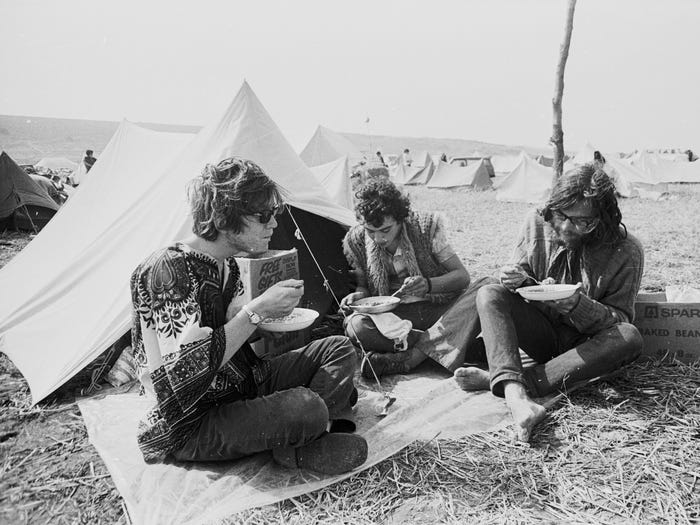
(Photo by Roger Jackson/Central Press/Getty Images)
And while Britain’s first Isle of Wight Festival was staged two years before Glastonbury and a year before Woodstock, it was the 1970 event which, inspired by Woodstock’s mythmaking, welcomed crowds of more than 600,000 to hear sets by many of the same stars who headlined in Bethel a year earlier, including The Who, Joan Baez, Ten Years After and Sly & the Family Stone. The festival also saw Miles Davis playing the biggest gig of his career when he brought his groundbreaking new Bitches Brew band to the main stage. It was the last edition of three consecutive festivals to take place on the island and is often acknowledged as the largest musical event of its time. However as the festival grew, the increasing commercialisation left the young disappointed and raged, smashing fences and throwing debris at the stage as the organisers tried to remove a few breachers, eventually leading to a symbolic end of the music festival revolution.
